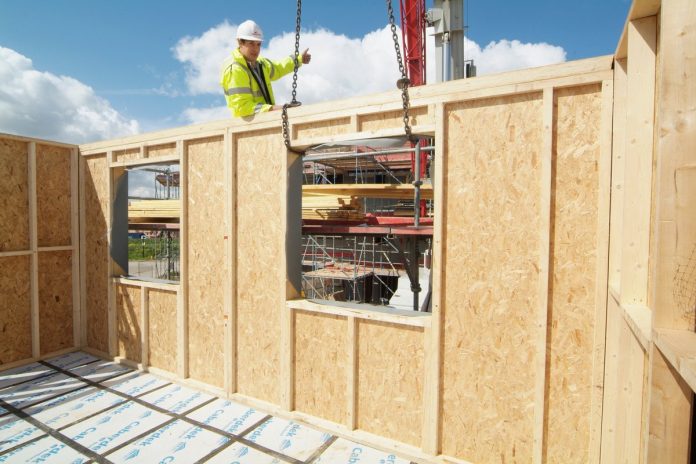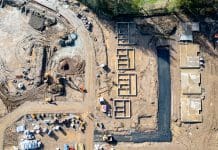Here, Andrew Carpenter, Chief Executive of the STA, reveals some of the findings of the recently published Timber Trends Report
The Structural Timber Association (STA) commissioned Egan Consulting to prepare a survey of UK timber markets across 2015. The Timber Trends Report has now been published and highlights the significant growth in the use of structural timber frame by the housing sector over the last 12 months.
Starting on an extremely positive note, 2016 was predicted to be another year of double-digit growth, with starts estimated at circa 56,000 in timber frame. The Timber Trends Report forecasts continued growth within the sector towards 2018 and beyond, as companies are taking advantage of market opportunities. These opportunities include factors such as advances in offsite construction supported by modern manufacturing systems and computerised technology.
Total housing starts are predicted to tip over 200,000 by 2018, with shortages in traditional skills and construction materials, encouraging the larger builders to look again at timber frame.
Timber technology offers an alternative
Structural timber technology addresses many government concerns associated with public procurement of housing – speed of build, environmental impact, lifetime energy efficiency and cost performance – these factors are all largely beneficial not only to government plans but the wider community.
The year 2015 proved to be successful in regards to house building in the UK – showing an 8.1% increase over 2014 in housing starts. England saw an increase of 7.9%, Wales 5.1%, Scotland 4.4% and Northern Ireland saw signs of recovery since the banking crisis and the property crash – recording year on year growth of 28.6%.
At over 48,000 starts in 2015, timber frame is approaching its pre-2008 level when 51,000 units were recorded in 2007. These results put 2015 as the second best performing year for timber frame since data began to be collected in 2002.
While the Farmer Review raises concerns about the construction industry, the structural timber sector can address many of these issues highlighted in this report. They will be tackled head-on through its natural transition to becoming an increasingly factory manufactured solution, encouraging the large-scale use of offsite construction which is both less labour intensive and enables quality to be more easily regulated. Although the external influences are difficult to control, we are still able to strive to improve quality, service and productivity within our sector.
Challenges
As with all sectors, Brexit holds some amount of uncertainty. However, timber is a global and innovative industry, which will grasp the opportunities and overcome any potential hurdles.
The sector has developed advantages unsurpassed by any other – the environmental credentials of wood are ones that cannot be matched by any other building material as it captures CO2 while it grows, as well as releasing relatively small amounts back into the environment after construction. Due to advances made in offsite structural timber construction – the speed of build remains unparalleled and allows the building to remain wind and watertight.
Structural timber solutions outweigh other sectors in regards to volume of materials – the sector is quick to respond and can add capacity at a relatively rapid rate to meet demand. Shortages in other traditional construction materials will continue to encourage larger builders and specifiers to look to alternatives, such as timber frame, structural insulated panel systems or cross laminated timber.
Confidence remains high
There is a lot of confidence in the sector, and if we are to continue to thrive, the sector must continue to innovate to keep ahead of the curve. We have seen momentum grow over the last three to five years and the timber sector is well placed to continue to capitalise on the current and forecast growth.
We should be celebrating the remarkable performance achieved over the last year, in continuing to grow the UK market share for timber frame technology to 27.4%. The market is showing higher levels of optimism amongst the structural timber solution providers, with more positive signs of investment and an increase in activity levels. The time is right for the construction industry to embrace innovative timber technology and offsite techniques to develop better buildings at a rapid rate, to overcome the shortfall in housing stock and produce energy efficient buildings which is particularly important for the social housing, education, healthcare and commercial sectors together with home owners and occupiers.
. . . . . . . . . . . . . . . . . . . . . . . . . . . . . . . . . . . . . . . . . . . . . . .
Andrew Carpenter
Chief Executive
Structural Timber Association (STA)
Tel: 01259 272140
office@structuraltimber.co.uk
Twitter @STAtimber














